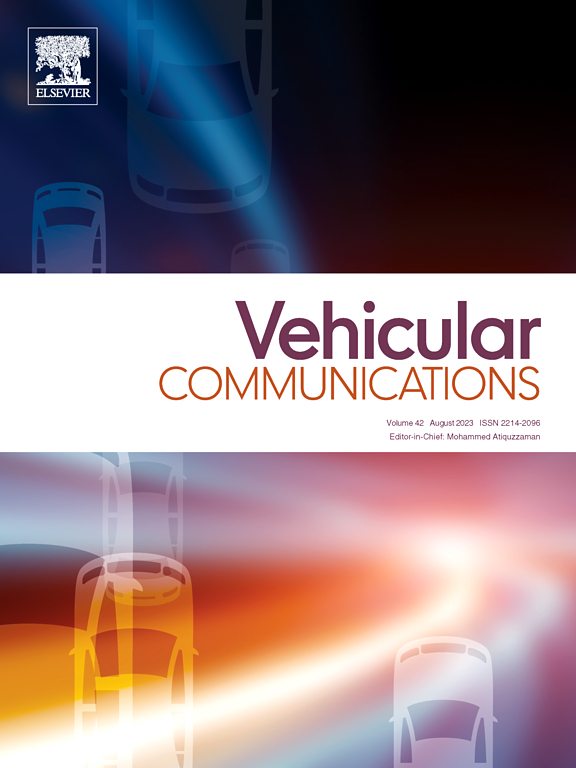多区域灾后评估无人机群协同覆盖路径规划
IF 6.5
2区 计算机科学
Q1 TELECOMMUNICATIONS
引用次数: 0
摘要
自然灾害的突发性要求迅速反应和及时提供信息。无人机技术的快速发展为灾后评估提供了新的机遇。同时,覆盖多个灾后地区的无人机群也面临着挑战。无人机利用和区域分配不均会导致某些无人机过度使用和能耗过高,降低协同效能和覆盖效率。为了提高协同效率,提出了协同同步率指标,合理分配区域,优化覆盖路径,减小无人机间的飞行距离差。减少无人机的使用数量和缩短总飞行距离可以提高覆盖效率。本文研究了灾后场景下多无人机多区域全覆盖路径规划问题。首先,我们建立了一个多目标模型,优化了无人机数量、总飞行距离和协同同步率。然后,基于改进的集基粒子群算法(S-PSO)提出了覆盖路径规划(SPSO-CPP)方法,结合贪婪区域选择机制和区域内和区域间路径的综合优化,规划出最小无人机数量和最优覆盖路径。最后,通过仿真测试对比,验证了所提算法的可行性、有效性和优越性。本文章由计算机程序翻译,如有差异,请以英文原文为准。
Collaborative coverage path planning for UAV swarm for multi-region post-disaster assessment
The suddenness of natural disasters demands rapid response and timely information. The rapid development of unmanned aerial vehicle (UAV) technology offers new opportunities for post-disaster assessment. At the same time, UAV swarms covering multiple post-disaster regions also face challenges. Uneven UAV utilization and region allocation can lead to overuse and excessive energy consumption of certain UAVs, reducing collaboration effectiveness and coverage efficiency. To improve the collaboration efficiency, we present a metric for collaboration synchronization rate, rationally allocate regions, and optimize coverage paths to reduce the travel distance difference between UAVs. Minimizing the number of UAVs used and shortening the total travel distance can improve the coverage efficiency. In this paper, we study the Multi-UAV Multi-region Complete Coverage Path Planning (MMCCPP) problem in post-disaster scenarios. First, we establish a multi-objective model that optimizes the number of UAVs, total travel distance, and collaboration synchronization rate. Then, we develop the Coverage Path Planning (SPSO-CPP) method based on improved Set-Based Particle Swarm Optimization (S-PSO) to plan the minimum number of UAVs and the optimal coverage paths, incorporating a greedy region-chosen mechanism and comprehensive optimization of paths within and between regions. Finally, we validate the feasibility, effectiveness, and superiority of the proposed algorithm through simulation test comparisons.
求助全文
通过发布文献求助,成功后即可免费获取论文全文。
去求助
来源期刊

Vehicular Communications
Engineering-Electrical and Electronic Engineering
CiteScore
12.70
自引率
10.40%
发文量
88
审稿时长
62 days
期刊介绍:
Vehicular communications is a growing area of communications between vehicles and including roadside communication infrastructure. Advances in wireless communications are making possible sharing of information through real time communications between vehicles and infrastructure. This has led to applications to increase safety of vehicles and communication between passengers and the Internet. Standardization efforts on vehicular communication are also underway to make vehicular transportation safer, greener and easier.
The aim of the journal is to publish high quality peer–reviewed papers in the area of vehicular communications. The scope encompasses all types of communications involving vehicles, including vehicle–to–vehicle and vehicle–to–infrastructure. The scope includes (but not limited to) the following topics related to vehicular communications:
Vehicle to vehicle and vehicle to infrastructure communications
Channel modelling, modulating and coding
Congestion Control and scalability issues
Protocol design, testing and verification
Routing in vehicular networks
Security issues and countermeasures
Deployment and field testing
Reducing energy consumption and enhancing safety of vehicles
Wireless in–car networks
Data collection and dissemination methods
Mobility and handover issues
Safety and driver assistance applications
UAV
Underwater communications
Autonomous cooperative driving
Social networks
Internet of vehicles
Standardization of protocols.
 求助内容:
求助内容: 应助结果提醒方式:
应助结果提醒方式:


